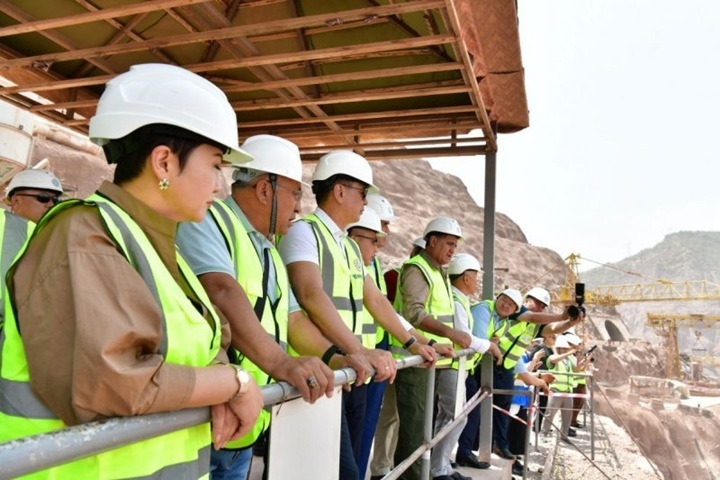During his state visit to the Republic of Tajikistan, President of Mongolia Ukhnaagiin Khurelsukh got acquainted with the progress of construction of the Rogun hydroelectric power station together with Deputy Prime Minister of Tajikistan Usmonali Usmonzoda. This was reported by the MONTSAME news agency.

However, as experts in the relevant area note, the project to complete the construction of the Rogun hydroelectric power station (HPP) in the Republic of Tajikistan is causing serious concern among the countries of Central Asia due to large-scale environmental and transboundary risks. Despite the strategic importance of the Rogun hydroelectric power station for the energy system of Tajikistan, its implementation can cause irreparable damage to the ecosystems and water resources of the region.
The main threat is associated with changes in the natural hydrological regime of the Vakhsh River, especially in the lower reaches of the Amu Darya. A reduction in water flow during the construction and subsequent filling of the reservoir, which will last at least 15 years, will create an acute shortage of water in the lower reaches of the river. According to experts, only at the stage of filling the reservoir can the influx of water into the Amu Darya delta and the Aral Sea decrease by 25% of the current volume, which will lead to accelerated land degradation, soil salinity and increased desertification processes.
Environmental impacts will affect unique natural areas, including tugai forests and floodplain ecosystems, which are UNESCO World Natural Heritage Sites. The lack of spring floods, previously provided for in the project documentation, threatens the disappearance of these valuable biosystems. Rare species of sturgeon living in the Amu Darya are also under threat of extinction.
Another critical aspect is ignoring the cumulative impacts of the project. In particular, the cumulative consequences of the simultaneous operation of the Rogun hydroelectric power station and the Kosh-Tepa canal under construction in Afghanistan, which could greatly increase water shortages and aggravate the environmental crisis in the region, have not been assessed.
Changing the regime of the Vakhsh River as a result of the redistribution of flow from the spring-summer period to the winter period will require a radical restructuring of agriculture in the lower reaches of the Amu Darya. This will pose a threat to food security and lead to loss of income for thousands of families. Not only ecosystems are at risk, but also the socio-economic structure of the region, which is fraught with forced migration of the population.
In addition, high uncertainty remains regarding water resource management at the interstate level. To date, agreements have not been developed or signed regulating the operating mode of the Rogun hydroelectric power station, taking into account the interests of all countries of the Amu Darya basin. In the context of growing water shortages and climate change, the absence of such agreements could exacerbate regional instability.
Thus, the implementation of the project to complete the construction of the Rogun hydroelectric power station without conducting a comprehensive and independent assessment of environmental and social risks, as well as without taking into account the opinions of neighboring countries, threatens the ecological balance and sustainable development of the entire Central Asian region.
INFOportal.news




